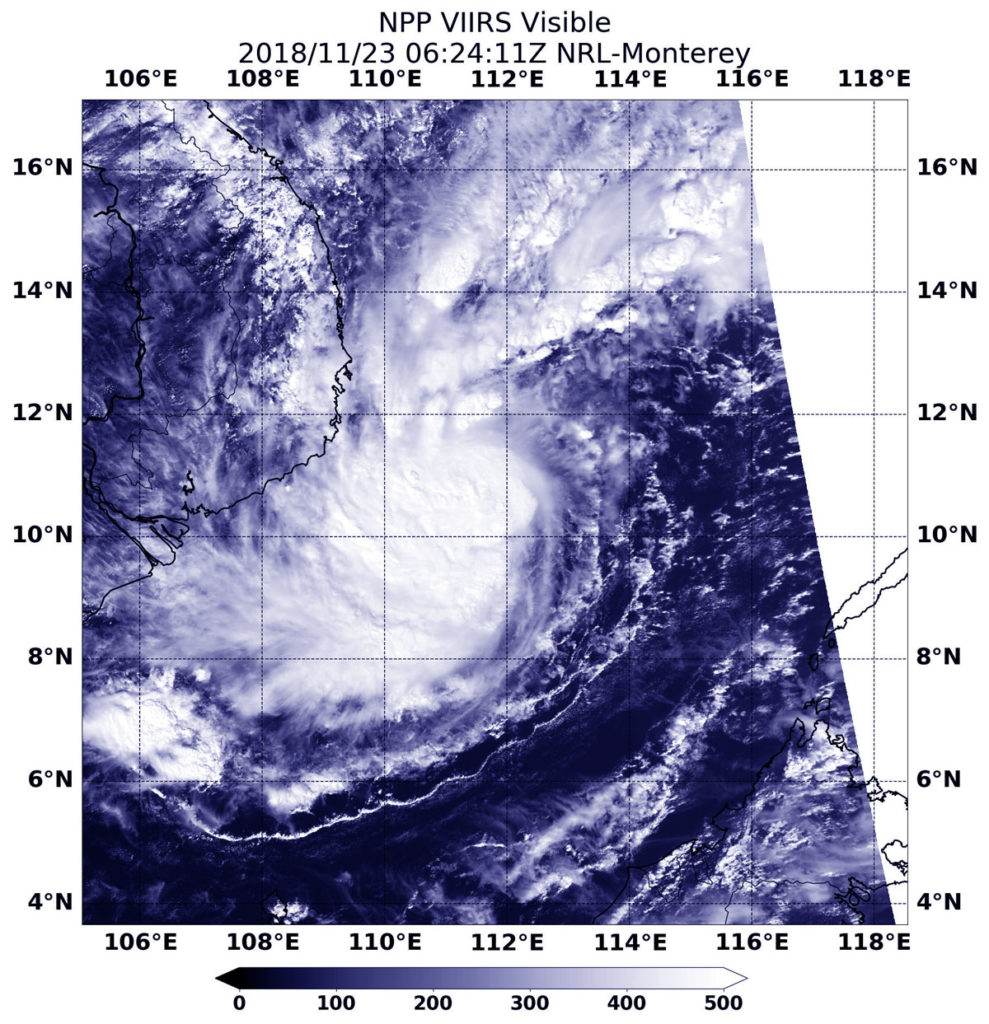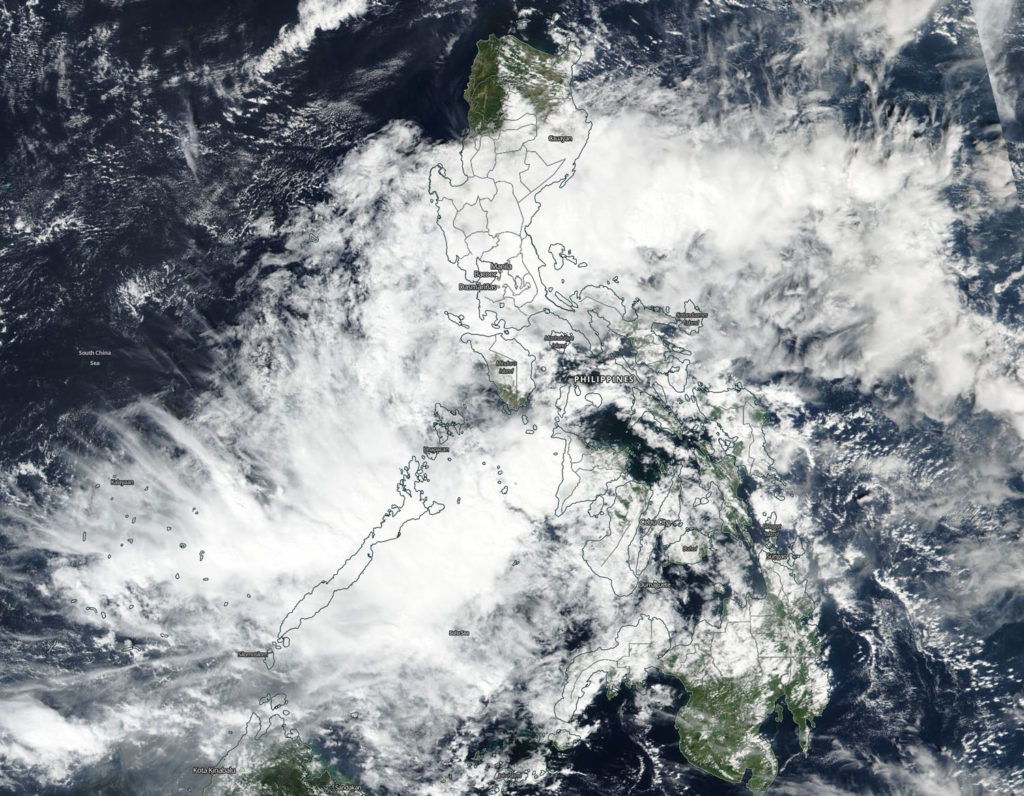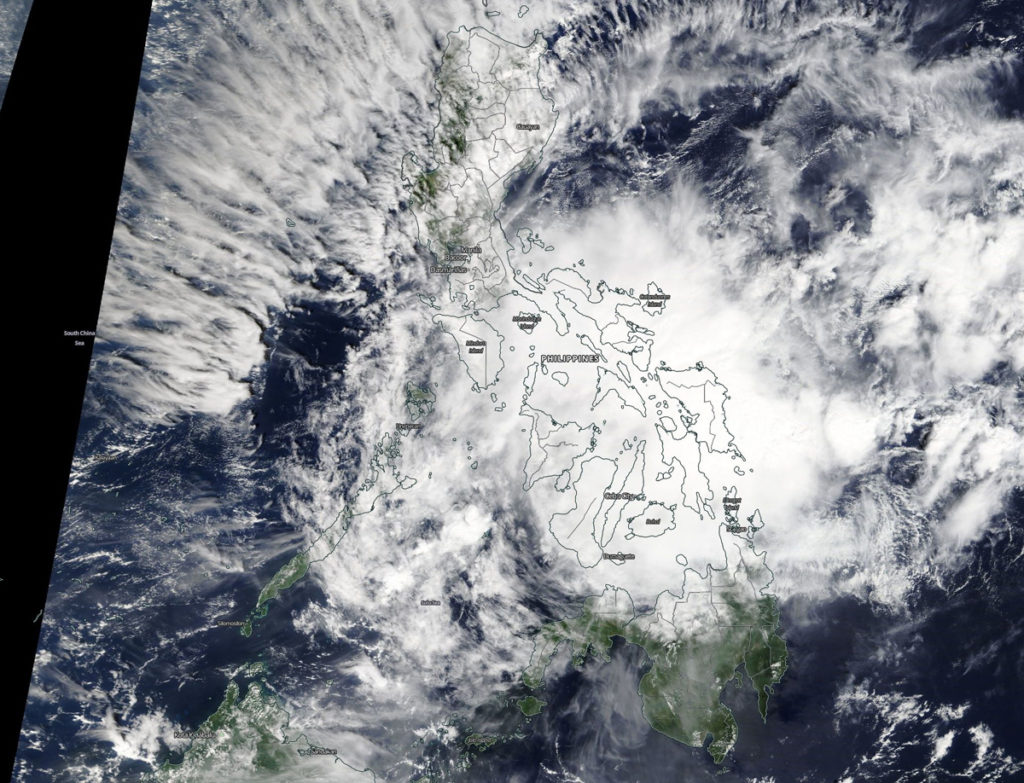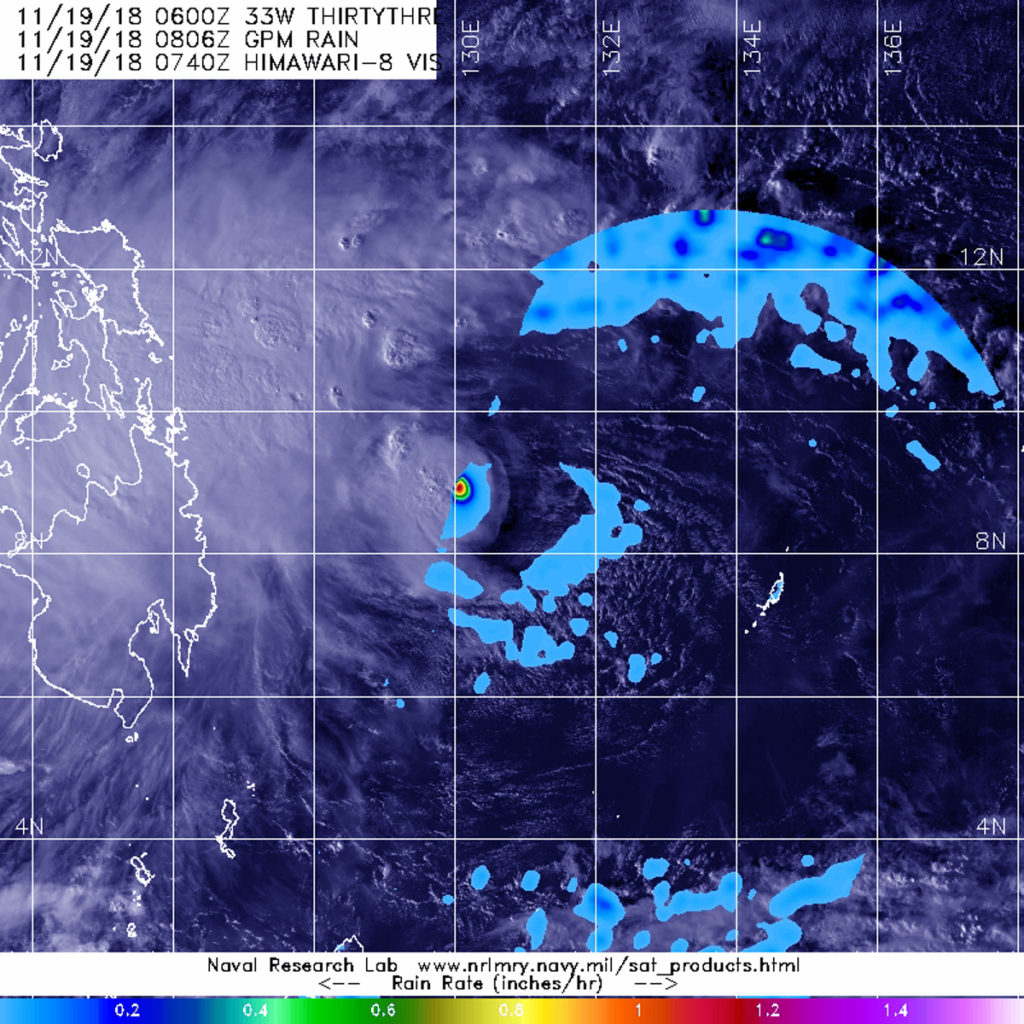November 29, 2018 – NASA’s IMERG Analyzed Tropical Storm Usagi’s Rainfall
When Tropical Cyclone 33W, also known as Usagi strengthened to hurricane intensity as it approached Vietnam from the South China Sea it dropped a lot of rain. Although the storm weakened to tropical storm intensity when coming ashore in Vietnam, it continued to generate a lot of rain, and NASA added up that heavy rainfall.

Very heavy rainfall and damaging winds accompanied tropical storm Usagi when it hit Vietnam’s southern coast. More than 350 mm (14 inches) of rainfall was reported causing widespread flooding around Ho Chi Minh City.
NASA’s Integrated Multi-satellitE Retrievals for GPM (IMERG) data were used to show estimates of rainfall accumulation produced by Usagi as the tropical cyclone moved across the South China Sea into Southeast Asia. An IMERG accumulation analysis created at NASA’s Goddard Space Flight Center in Greenbelt, Maryland encompassed the period from November 19 to 26, 2018.
NASA rainfall analysis encompassed the period from November 19 to 26, 2018 tracked rain dropped by 33W (Usagi) across the South China Sea into Southeast Asia. Tropical Storm Usagi or 33W often dropped more than 240 mm (9.4 inches) of precipitation over southern Vietnam. Rainfall intensity decreased rapidly as the remnants of Usagi moved inland over Cambodia. Credit: NASA/JAXA, Hal Pierce
Those data indicated that Usagi dropped moderate to heavy rain along its path. The analysis showed that tropical storm Usagi often dropped more than 240 mm (9.4 inches) of precipitation over southern Vietnam. Rainfall intensity decreased rapidly as the remnants of Usagi moved inland over Cambodia.
GPM is a joint mission between NASA and the Japan Aerospace Exploration Agency, JAXA.
By Harold F. Pierce
NASA Goddard Space Flight Center





